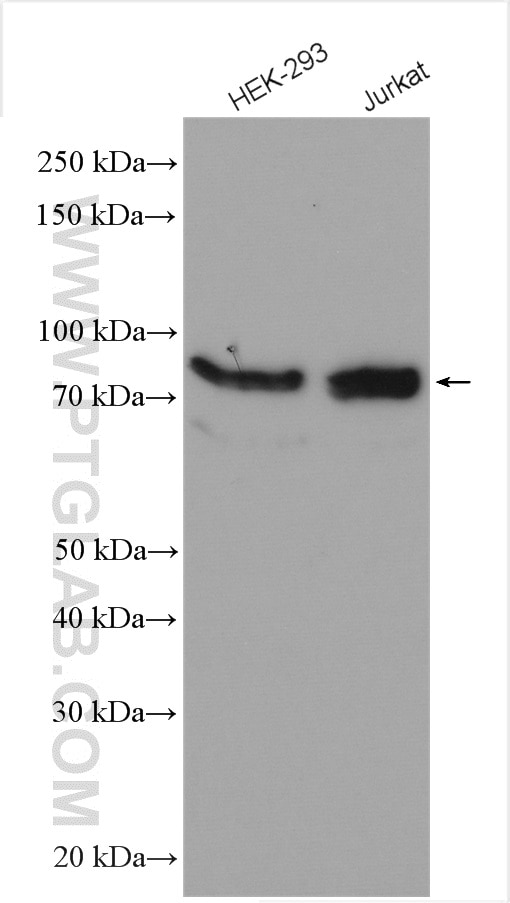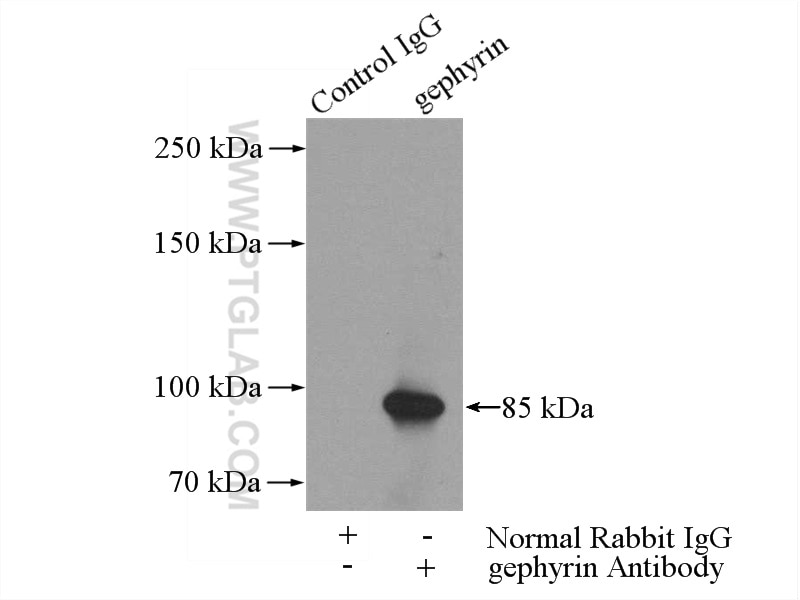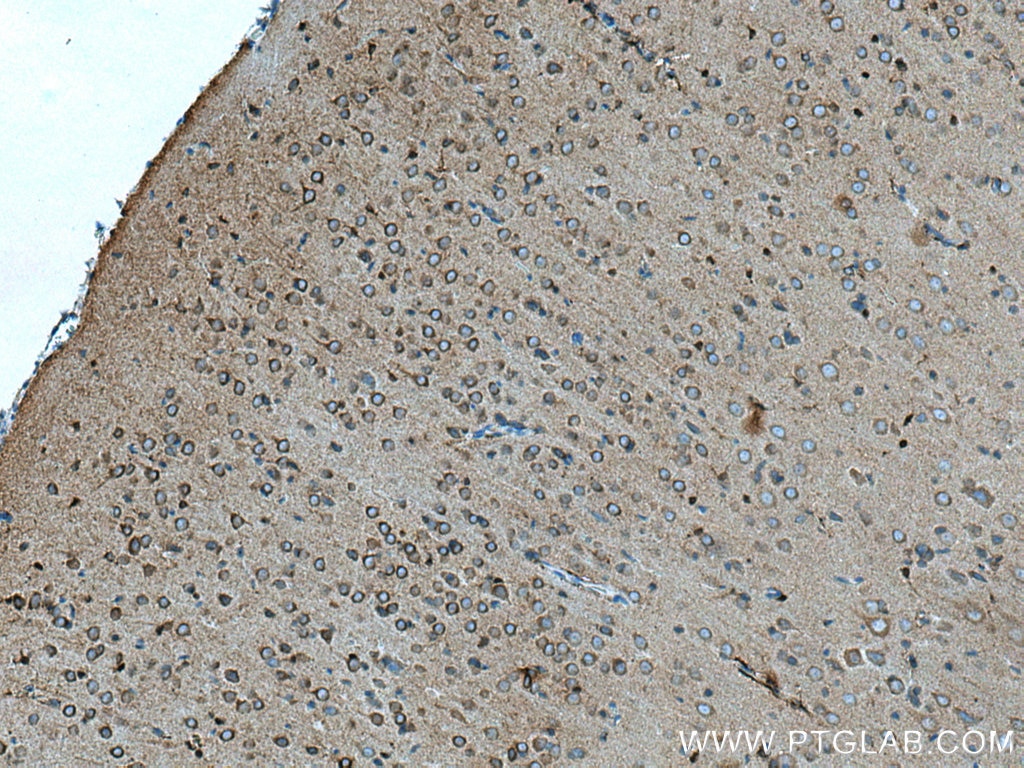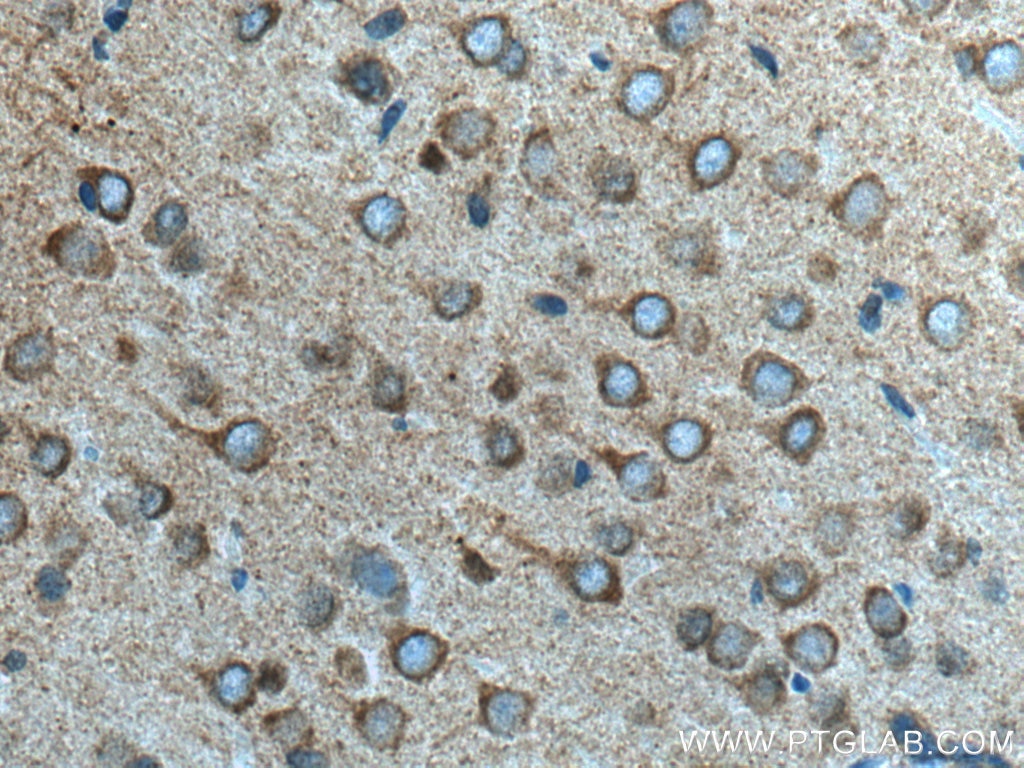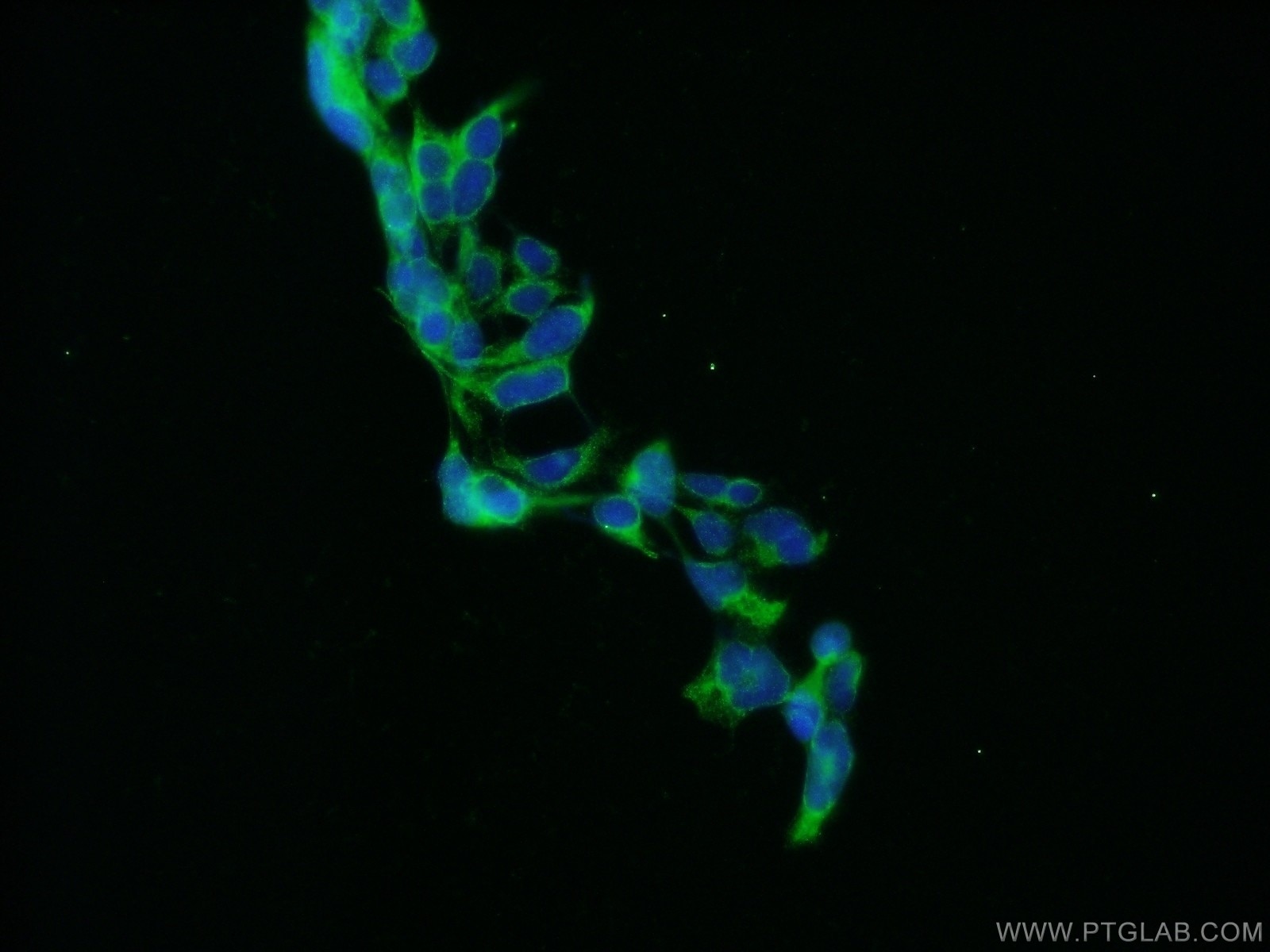gephyrin Polyklonaler Antikörper
gephyrin Polyklonal Antikörper für WB, IHC, IF/ICC, IP, ELISA
Wirt / Isotyp
Kaninchen / IgG
Getestete Reaktivität
human, Maus, Ratte
Anwendung
WB, IHC, IF/ICC, IP, ELISA
Konjugation
Unkonjugiert
Kat-Nr. : 12681-1-AP
Synonyme
Galerie der Validierungsdaten
Geprüfte Anwendungen
| Erfolgreiche Detektion in WB | HEK-293-Zellen, Jurkat-Zellen |
| Erfolgreiche IP | HEK-293-Zellen |
| Erfolgreiche Detektion in IHC | Rattenhirngewebe Hinweis: Antigendemaskierung mit TE-Puffer pH 9,0 empfohlen. (*) Wahlweise kann die Antigendemaskierung auch mit Citratpuffer pH 6,0 erfolgen. |
| Erfolgreiche Detektion in IF/ICC | HEK-293-Zellen |
Empfohlene Verdünnung
| Anwendung | Verdünnung |
|---|---|
| Western Blot (WB) | WB : 1:500-1:1000 |
| Immunpräzipitation (IP) | IP : 0.5-4.0 ug for 1.0-3.0 mg of total protein lysate |
| Immunhistochemie (IHC) | IHC : 1:50-1:500 |
| Immunfluoreszenz (IF)/ICC | IF/ICC : 1:20-1:200 |
| It is recommended that this reagent should be titrated in each testing system to obtain optimal results. | |
| Sample-dependent, check data in validation data gallery | |
Veröffentlichte Anwendungen
| WB | See 4 publications below |
| IF | See 1 publications below |
Produktinformation
12681-1-AP bindet in WB, IHC, IF/ICC, IP, ELISA gephyrin und zeigt Reaktivität mit human, Maus, Ratten
| Getestete Reaktivität | human, Maus, Ratte |
| In Publikationen genannte Reaktivität | Maus |
| Wirt / Isotyp | Kaninchen / IgG |
| Klonalität | Polyklonal |
| Typ | Antikörper |
| Immunogen | gephyrin fusion protein Ag3370 |
| Vollständiger Name | gephyrin |
| Berechnetes Molekulargewicht | 769 aa, 83 kDa |
| Beobachtetes Molekulargewicht | 93 kDa |
| GenBank-Zugangsnummer | BC030016 |
| Gene symbol | GPHN |
| Gene ID (NCBI) | 10243 |
| Konjugation | Unkonjugiert |
| Form | Liquid |
| Reinigungsmethode | Antigen-Affinitätsreinigung |
| Lagerungspuffer | PBS mit 0.02% Natriumazid und 50% Glycerin pH 7.3. |
| Lagerungsbedingungen | Bei -20°C lagern. Nach dem Versand ein Jahr lang stabil Aliquotieren ist bei -20oC Lagerung nicht notwendig. 20ul Größen enthalten 0,1% BSA. |
Hintergrundinformationen
Gephyrin (GPHN) is an organizational protein that clusters and localizes the inhibitory glycine receptor (GlyR) and GABAA receptors to the microtubular matrix of the neuronal postsynaptic membrane. Mice deficient in gephyrin develop a hereditary molybdenum cofactor deficiency and a neurological phenotype that mimics startle disease (hyperekplexia). In non-neuronal tissues, the encoded protein is also required for molybdenum cofactor biosynthesis. Two isoforms produced by alternative splicing have been described. The observed MW of Gephyrin is 93 kDa, larger than the predicated of 83 kDa, which may be due to the modifications on various phosphorylation sites.
Protokolle
| Produktspezifische Protokolle | |
|---|---|
| WB protocol for gephyrin antibody 12681-1-AP | Protokoll herunterladen |
| IHC protocol for gephyrin antibody 12681-1-AP | Protokoll herunterladen |
| IF protocol for gephyrin antibody 12681-1-AP | Protokoll herunterladen |
| IP protocol for gephyrin antibody 12681-1-AP | Protokoll herunterladen |
| Standard-Protokolle | |
|---|---|
| Klicken Sie hier, um unsere Standardprotokolle anzuzeigen |
Publikationen
| Species | Application | Title |
|---|---|---|
J Neurosci Microglial Tmem59 Deficiency Impairs Phagocytosis of Synapse and Leads to Autism-Like Behaviors in Mice. | ||
Cell Rep Optogenetic Activation of Striatopallidal Neurons Reveals Altered HCN Gating in DYT1 Dystonia. | ||
Neurosci Lett Microglia participate in postoperative cognitive dysfunction by mediating the loss of inhibitory synapse through the complement pathway | ||
Arthritis Rheumatol Anti-Gephyrin antibodies: A novel specificity in patients with systemic sclerosis and lower bowel dysfunction |
Rezensionen
The reviews below have been submitted by verified Proteintech customers who received an incentive for providing their feedback.
FH Reyes (Verified Customer) (03-01-2024) | Gephyrin antibody (in red) works on human brain paraffin sections, although being found in the synapsis would make it difficult to quantify in the tissue.
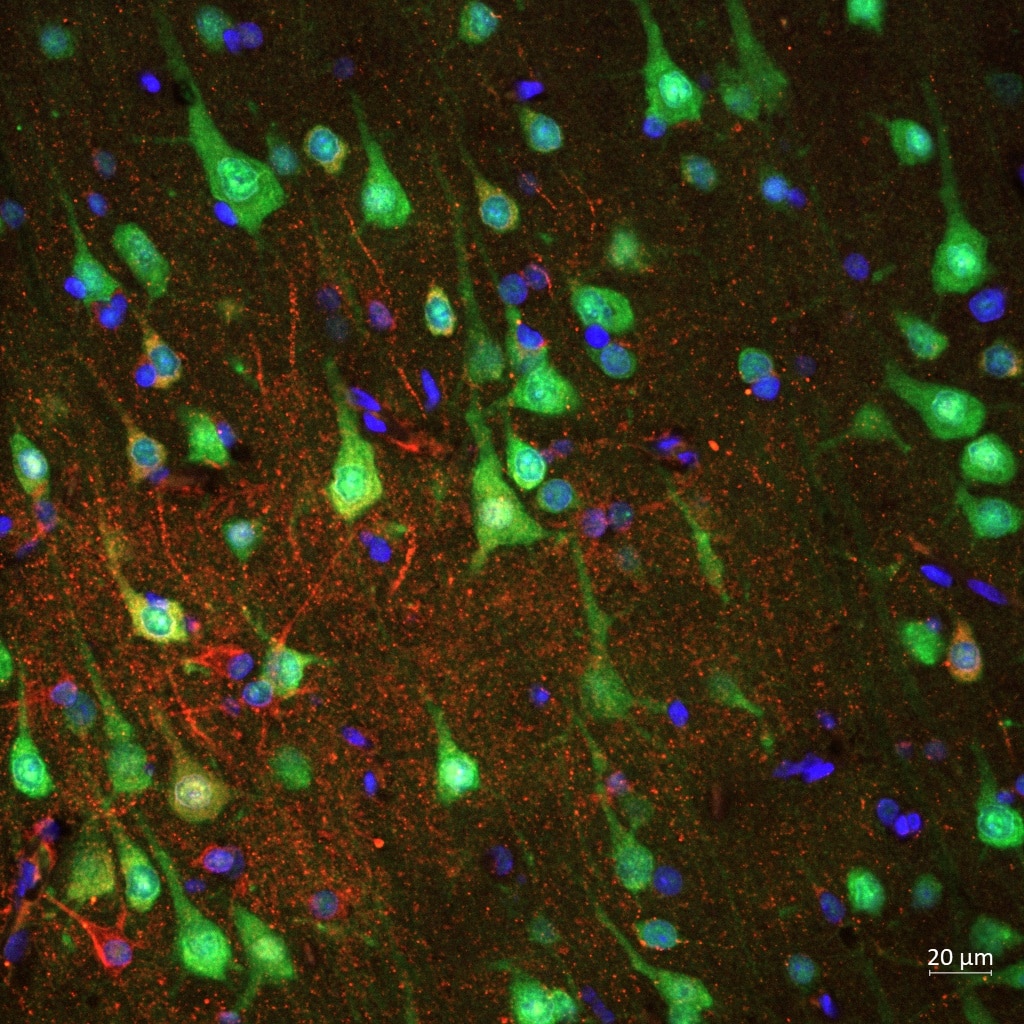 |
FH Deria (Verified Customer) (07-14-2022) | This antibody works fine
|
